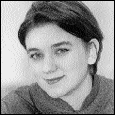After the Exodus: Berkeley, the Empty City
By Tamara Keith, Public Affairs
Posted January 13, 1999
 Tamara Keith |
The City of Berkeley goes through an amazing transformation as finals week draws to a close. In busses, airport shuttles and personal cars, its 30,000 temporary residents make their exit, and Berkeley becomes a virtual ghost town. In the neighborhoods closest to campus the previously impossible task of parking becomes a breeze, apartments are dim, popular restaurants serve only a few families at their busiest hours and the sidewalks are vacant by 9 at night.
For me, during winter break,Telegraph Avenue just didn't feel the same. When classes are in session, there's something comforting about seeing large groups of college kids rushing to Fat Slice or the "grease ghetto" for a late night snack. After Dec. 15, midnight snackers were nowhere to be found.
Also missing were the regulars who ordinarily inhabit my favorite coffee spot. Lattes just didn't taste as good without the sounds of students working on group projects, book pages turning, laptops booting up and music blaring through the headphones of the person next to me. Ironically, the service was significantly slower, too. I guess without long lines of caffeine fiends, the guys behind the counter had no motivation to froth and brew at their usually rapid pace.
Without a critical mass of students around to make business profitable, many stores and cafes closed early. Several bookshops near campus didn't even open their doors for most of winter break. When I called my favorite super-cheap, ultra-greasy home delivery pizza joint, an answering machine announced that it would be closed until Jan. 19.
I frequently hear long-time Berkeley residents complain about the university and the "negative" influence it has on their mellow free-thinking town. They don't like all the traffic and commotion that the university's thousands of students bring with them - and in some respects I don't blame them. Without the hordes, Berkeley is much easier to navigate. It is also less exciting and gets pretty lonely.
I believe that Berkeley only became the unique city that it is because of the University's influence. This is not a revolutionary idea. The fact is, the bookstores, intellectuals, coffee shops, boutiques and occasional freaks that fill the city wouldn't be here if the university - its professors, staff and students - hadn't come first. Local businesses set up shop because the owners were attracted to a college town environment, and it's the college community that sustains them.
![]()
![]()
January 13 - 19, 1999 (Volume 27, Number 19)
Copyright 1999, The Regents of the University of California.
Produced and maintained by the Office of Public Affairs at UC Berkeley.
Comments? E-mail berkeleyan@pa.urel.berkeley.edu.